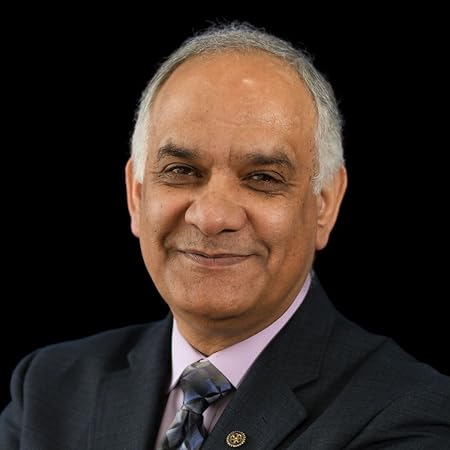All too many people approach their retirement years with a kind of “wishful thinking” attitude. They spend their working years avoiding the kind of holistic planning that experts like Rajiv Nagaich advocate, preferring instead to imagine that all will somehow turn out well in the end. That’s one reason why, as Rajiv often reminds us, 70 percent of us will fail to have the kind of retirement life we’ve longed for. That’s a pretty dismal failure rate!
Today, for a different twist, we’re offering for your review this recent article from the Wall Street Journal in which reporter Lisa Ward profiles a California woman in her 40s who has already decided how and when she wants to retire. The only problem is, as her financial planner points out, her retirement dreams are probably unrealistic.
As we’ll see, the article demonstrates one significant benefit of working with a qualified financial planner: they tell us the truth about our finances, whether we like it or not. In this woman’s case, while her specific dreams may go unrealized, she is addressing the issue early – and that means she has time to make some course corrections that will help her adjust her plans and give her the kind of retirement she hopes to enjoy. Let’s take a closer look.
(Please note that a subscription may be required to access the Wall Street Journal article.)
Dreams of Early Retirement Clash with Present-Day Reality
Reporter Ward introduces us to Karen Montes, a 44-year-old law librarian in Los Angeles County. Divorced with no children, Montes earns about $137,800 annually and has roughly $400,000 in retirement accounts. She dreams of retiring at age 61, and she already has her eye on the type of CCRC (continuing care retirement community) where she hopes to live.
But Montes has a major burden in the form of significant debt. “She has a primary mortgage of $165,000 and a second mortgage of $228,000,” Ward writes. “Her home is valued at about $800,000. She also has a car loan of $15,500.”
Financial Planner Says Retirement Timeline is Unrealistic
A financial planner tasked with evaluating Montes’ situation thinks that she should be able to afford to retire to a CCRC – but not on the timeline she is hoping for.
“Karen Montes, who is rebuilding her finances after a recent divorce, says she wants to retire when she turns 61 if not sooner,” Ward writes. But the financial planner estimates she might be able to move into a continuing-care facility in Los Angeles County at age 70, not age 61 – “provided she does some financial housekeeping first.”
At present, says the planner, her finances are not on track for the goals she hopes to achieve.
The Devil is in the Financial Details
The Wall Street Journal article goes into a fair degree of detail regarding Montes’ financial health. “She earns about $120,243 a year from the county before taxes,” says Ward. “She also earns about $17,600 a year as a part-time adjunct librarian for Long Beach City College.”
Montes carries two mortgages on her $800,000 home. Her primary mortgage (balance $165,000) has an excellent fixed rate of 2.25 percent. With payments of $1,857 monthly, she should have that loan paid off in 11 years. But earlier this year, following her divorce, “she took out a second mortgage of $228,000 with a fixed rate of 7.6525 percent,” says Ward. “That costs her $1,610 month, with a $135,000 balloon payment due at the end of the mortgage in 20 years.”
Montes estimates monthly expenses of $910 for a $15,500 car loan; $275 for auto insurance; $400 for dining out and other entertainment; $341 for utilities; $250 for groceries; and $140 for gas.
Assets are Fairly Healthy – but Are They Healthy Enough?
Considering her age and life situation, Montes appears to have some significant things going for her. She has solid earnings, good job security, and decent savings, and stands to earn a good pension when she retires.
Ward writes, “In the plus column, she has a 401(k) and a Roth 401(k) from previous employment valued at a combined $240,000, and a Roth IRA valued around $5,485. She currently doesn’t contribute to those accounts. In addition, she has a 401(k) and 457(b) with the county valued at $68,000 and $84,000, respectively. She contributes 6 percent of her earnings to each and receives a 4 percent employer match.”
Future Earnings Will Be Guaranteed if She Keeps Working
Looking ahead, Montes can count on reliable income once she retires, says the article. Ward explains, “Montes plans to start collecting Social Security benefits at 67, at which time she will receive about $1,500 a month. If she retires from Long Beach City College at 67, she will also receive about $300 a month from the California State Teachers Retirement System.”
Best of all, once she reaches age 61, “the currently 44-year-old law librarian for the Los Angeles County Counsel will at that point receive a monthly pension of about $5,360 pretax, and free healthcare.”
Montes says she can also generate an additional $1,300 per month renting out a room in her home. She has emergency savings of $11,400.
A Professional Financial Planner Injects a Dose of Reality
For the article, the Wall Street Journal worked with certified financial planner Jaime Eckels, based in Auburn Hills, Michigan. She says Montes’ goals are admirable but not realistic.
“Montes is unlikely to be able to stop working at 61 and afford a high-end continuing-care community,” Eckels told the Wall Street Journal. Part of the challenge is the rising cost of the type of senior housing Montes says she prefers.
Eckels’ firm, Plante Moran, analyzed the projected housing costs where Montes lives. “In 17 years, entry fees for such facilities in Los Angeles County will likely range from $1.35 million to $3 million,” Ward writes, “and monthly maintenance fees from $12,900 to $19,400,” based on company estimates.
Even a lower-tier Los Angeles CCRC will cost between $510,000 and $850,000 in entry fees plus $7,200 to $10,800 monthly, Eckels states. The only way for Montes to afford those costs is to make some significant financial adjustments now.
Planner Outlines Steps to Take to Regain Financial Footing
According to Eckels, the first step for Montes involves her savings. “She needs to catch up on her savings, which is difficult when you have a lot of high-interest debt,” Eckels told the Wall Street Journal.
“Montes should build about six months of expenses, or $38,000, in her emergency fund,” Ward writes. “Next she should focus on paying down the second mortgage.” Eckels endorses the idea of renting out a room, and she also suggests Montes temporarily cut her retirement fund contributions to 4 percent, which would still qualify her for the employer match.
Once the second mortgage is paid down, says Eckels, Montes can then focus on building up her retirement savings.
Early Retirement is Possible, but CCRC Move Will Have to Wait
Based on the advice from financial planner Eckels, Montes may be able to achieve her desire to retire at age 61, but her move to a CCRC will have to be postponed.
“When Montes retires at 61 she should plan to live only off her pension for the first nine years,” says Ward. “That should cover her expenses and provide extra money for travel. She should also defer Social Security payments and not touch her savings accounts until she is 70.”
At that point, if Montes has taken the other steps to boost savings and reduce debt, she should be able to sell her home to cover the entry fee in order to move to a continuing care retirement community. Her pension, savings, and Social Security payments should cover the monthly costs.
The good news is that Montes is planning ahead. “It’s good she is thinking about retirement now. It will help shape her short- and long-term financial plans,” Eckels told the Wall Street Journal.
Rajiv Nagaich – Your Retirement Planning Coach and Guide
The long-awaited book by Rajiv Nagaich, called Your Retirement: Dream or Disaster, has been released and is now available to the public. Retirement: Dream or Disaster joins Rajiv’s ground-breaking DVD series and workbook, Master Your Future, as a powerful planning tool in your retirement toolbox. As a friend of AgingOptions, we know you’ll want to get your copy and spread the word.
You’ve heard Rajiv say it repeatedly: 70 percent of retirement plans will fail. If you know someone whose retirement turned into a nightmare when they were forced into a nursing home, went broke paying for care, or became a burden to their families – and you want to make sure it doesn’t happen to you – then this book is must-read.
Through stories, examples, and personal insights, Rajiv takes us along on his journey of expanding awareness about a problem that few are willing to talk about, yet it’s one that results in millions of Americans sleepwalking their way into their worst nightmares about aging. Rajiv lays bare the shortcomings of traditional retirement planning advice, exposes the biases many professionals have about what is best for older adults, and much more.
Rajiv then offers a solution: LifePlanning, his groundbreaking approach to retirement planning. Rajiv explains the essential planning steps and, most importantly, how to develop the framework for these elements to work in concert toward your most deeply held retirement goals.
Your retirement can be the exciting and fulfilling life you’ve always wanted it to be. Start by reading and sharing Rajiv’s important message. And remember, Age On, everyone!
(originally reported at www.wsj.com)


